Do you have a question about the Carrier 619PEQ018BBMA and is the answer not in the manual?
Detailed explanation of codes used in indoor unit model numbers, covering type, capacity, and voltage.
Detailed explanation of codes used in outdoor unit model numbers, covering type, capacity, and zones.
List of standard and optional features for indoor and outdoor units, including comfort and safety functions.
Table showing compatible indoor and outdoor unit model combinations based on size and type.
Specifications for capacity, SEER, EER, HSPF, piping, electrical data, and detailed measurements for outdoor units.
Required minimum clearances around the outdoor unit for proper air intake, exhaust, and service access.
Technical data for electrical requirements, including voltage, FLA, MCA, MOCP, and fan motor specifications.
Instructions for power and communication wiring, including NEC/CEC compliance, wire types, and connection diagrams.
Diagrams of refrigerant flow for cooling/heating cycles and guidelines for refrigerant line sizing, installation, and insulation.
Procedures for system evacuation using deep vacuum and triple evacuation methods, and refrigerant charge adjustments.
General methodology, required tools, and guidance on checking diagnostic codes for unit malfunctions.
Detailed troubleshooting for specific error codes (E0-E8, P0-P6) and their corresponding solutions.
Methods for testing temperature sensors, compressor, fan motor, valves, and EXV resistance and voltage.
Step-by-step guides for removing panels, fan assembly, electrical parts, IPM board, and connectors.
Detailed explanation of codes used in indoor unit model numbers, covering type, capacity, and voltage.
Detailed explanation of codes used in outdoor unit model numbers, covering type, capacity, and zones.
List of standard and optional features for indoor and outdoor units, including comfort and safety functions.
Table showing compatible indoor and outdoor unit model combinations based on size and type.
Specifications for capacity, SEER, EER, HSPF, piping, electrical data, and detailed measurements for outdoor units.
Required minimum clearances around the outdoor unit for proper air intake, exhaust, and service access.
Technical data for electrical requirements, including voltage, FLA, MCA, MOCP, and fan motor specifications.
Instructions for power and communication wiring, including NEC/CEC compliance, wire types, and connection diagrams.
Diagrams of refrigerant flow for cooling/heating cycles and guidelines for refrigerant line sizing, installation, and insulation.
Procedures for system evacuation using deep vacuum and triple evacuation methods, and refrigerant charge adjustments.
General methodology, required tools, and guidance on checking diagnostic codes for unit malfunctions.
Detailed troubleshooting for specific error codes (E0-E8, P0-P6) and their corresponding solutions.
Methods for testing temperature sensors, compressor, fan motor, valves, and EXV resistance and voltage.
Step-by-step guides for removing panels, fan assembly, electrical parts, IPM board, and connectors.
| Brand | Carrier |
|---|---|
| Model | 619PEQ018BBMA |
| Category | Air Conditioner |
| Language | English |

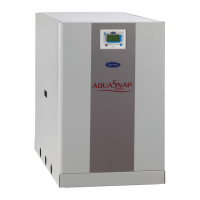

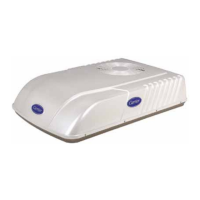


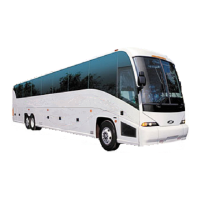
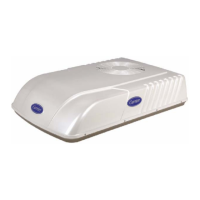

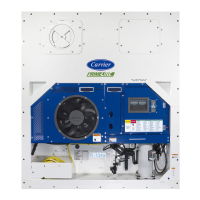
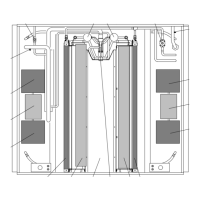

